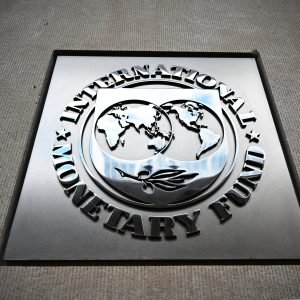
In celebration of the 75th anniversary of the founding of the People’s Republic of China.
THE best way to understand the changes in China’s development in the new era is by looking at the real data.
Since the 18th CPC National Congress, under the strong leadership of the CPC Central Committee with General Secretary Xi Jinping as the core, over 1.4 billion Chinese people have united in their endeavors and pursued progress with determination. China’s economic and social development has made historic achievements and undergone transformative changes.
From 2013 to 2023, the Gross Domestic Product (GDP) increased from 59.3 trillion yuan to 126 trillion yuan, maintaining an average annual growth of over 6 percent. At the annual average exchange rate, the total economic volume reached $17.9 trillion, firmly securing second position globally. Per capita GDP increased from $7020 to $12,681.
Over the past decade, China has continuously showcased its role as a “stabilizer” and “engine” for the global economy. China’s total economic output’s proportion to the world economy has risen from 12.3 percent to over 18 percent, contributing to an annual average growth rate of over 30 percent to the global economy.
The country’s consumer market, which is underpinned by a population of over 1.4 billion and an expanding middle-income group that exceeds 400 million, will continue to power the country’s economic growth and attract businesses from all over the world. The per capita disposable income of residents increased from 16,000 yuan to 39,000 yuan. In the next 15 years, the country’s middle-income group is expected to exceed 800 million, and every one percentage point increase in the proportion of the total population will increase annual consumer spending by more than US$150 billion, further driving the development of an enormous market.
From 2013 to 2023, China’s total retail sales of consumer goods surged from 23.8 trillion yuan to 47.1 trillion yuan, consistently maintaining its position as the world’s second-largest consumer market, the largest online retail market, and the second-largest import market globally. Chinese economy hedges against the uncertainty of the external environment with the certainty of its own development and strives to forge a strong and resilient national economic circulation system. The contribution rate of domestic demand to economic growth has exceeded 100% in eight years.

China’s total R&D expenditure increased from 1 trillion yuan in 2012 to 3.3 trillion yuan in 2023, accounting for 2.64% of GDP, and the total number of researchers ranked first in the world. With its huge data output and rich data resources, China has the second largest data mine in the world, and China now has some 400,000 high-tech enterprises and ranks second globally in the number of unicorn companies. Major achievements have been made in manned space flight, lunar and Mars exploration, deep-sea and deep-earth exploration, supercomputers, satellite navigation, quantum information, nuclear power technology, large aircraft manufacturing, biomedicine, etc. China has entered the ranks of innovative countries.
In terms of the industrial base, China is the only country with industries across all categories in the U.N. industrial classification. The added value of China’s manufacturing industry accounts for around 30 percent of the global total, ranking first in the world for 14 consecutive years. China is also home to over 200 mature industry clusters, and has 41 major industrial categories, 207 medium industrial categories, and 666 small industrial categories, forming an independent and complete modern industrial system. With its large scale, complete categories, and strong supporting capacity, China’s industrial system can meet the demand of the rapid development of social productivity and will contribute to better global allocation of production factors and the rise in global productivity.
Over the past 10 years, more than 150 countries and 30 international organizations have joined the Belt and Road Initiative and signed more than 200 cooperation documents. So far, the BRI has established more than 3,000 cooperation projects. A large number of landmark projects such as the China-Europe Express, the Jakarta-Bandung High-Speed Railway, and the China-Laos Railway have effectively promoted local connectivity. A number of “small but beautiful” livelihood projects continue to benefit local people, creating more than 420,000 jobs and will lift 40 million people out of poverty.

In the past four decades and more, China has achieved development and shared benefits with the world through opening up. Right now, China is a major trading partner of over 140 countries and regions. Our overall tariff level has been cut to 7.3 percent, relatively on par with the developed members in the World Trade Organization.
China has maintained its position as the largest goods trading nation for seven consecutive years. In 2023, the total value of imports and exports exceeded $5.9 trillion. Among them, China’s export share of the international market was 14.2%, ranking first in the world for 15 consecutive years; import market share was 10.6%, ranking second for 15 consecutive years. In 2023, the bilateral trade volume between China and the Philippines reached $71.9 billion. China is the Philippines’ largest trading partner, the largest source of imports, and the second-largest export market.
Over the past 10 years, China has supported an average economic growth of 6.6% with an average annual energy consumption growth rate of 3% and is one of the countries with the fastest reduction in energy intensity in the world. At present, China’s clean energy consumption accounts for 26.4%, and the proportion of coal consumption has dropped from 68.5% in 2012 to 55.3% in 2023, contributing more than 40% to the growth of global non-fossil energy consumption.
China is deepening its transition toward green and low-carbon growth. Close to half of the world’s installed photovoltaic capacity is in China. Over half of the world’s new energy vehicles (NEVs) run on roads in China, and its NEV ownership has reached over 20 million units. China contributes one-fourth of the increased area of afforestation in the world. China is also cultivating large-scale new growth drivers in sectors such as green infrastructure, green energy, green transportation, and green lifestyle. This will generate investment and consumption markets with an estimated size of RMB10 trillion yuan annually and promise huge potential.








